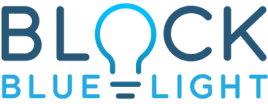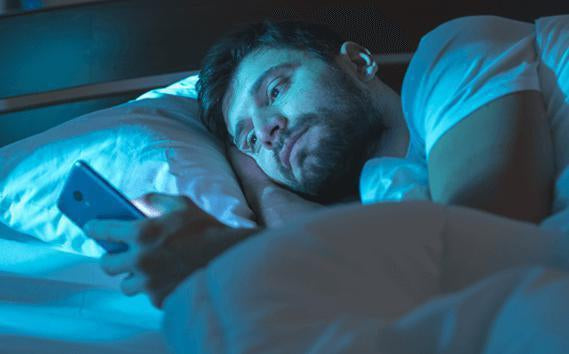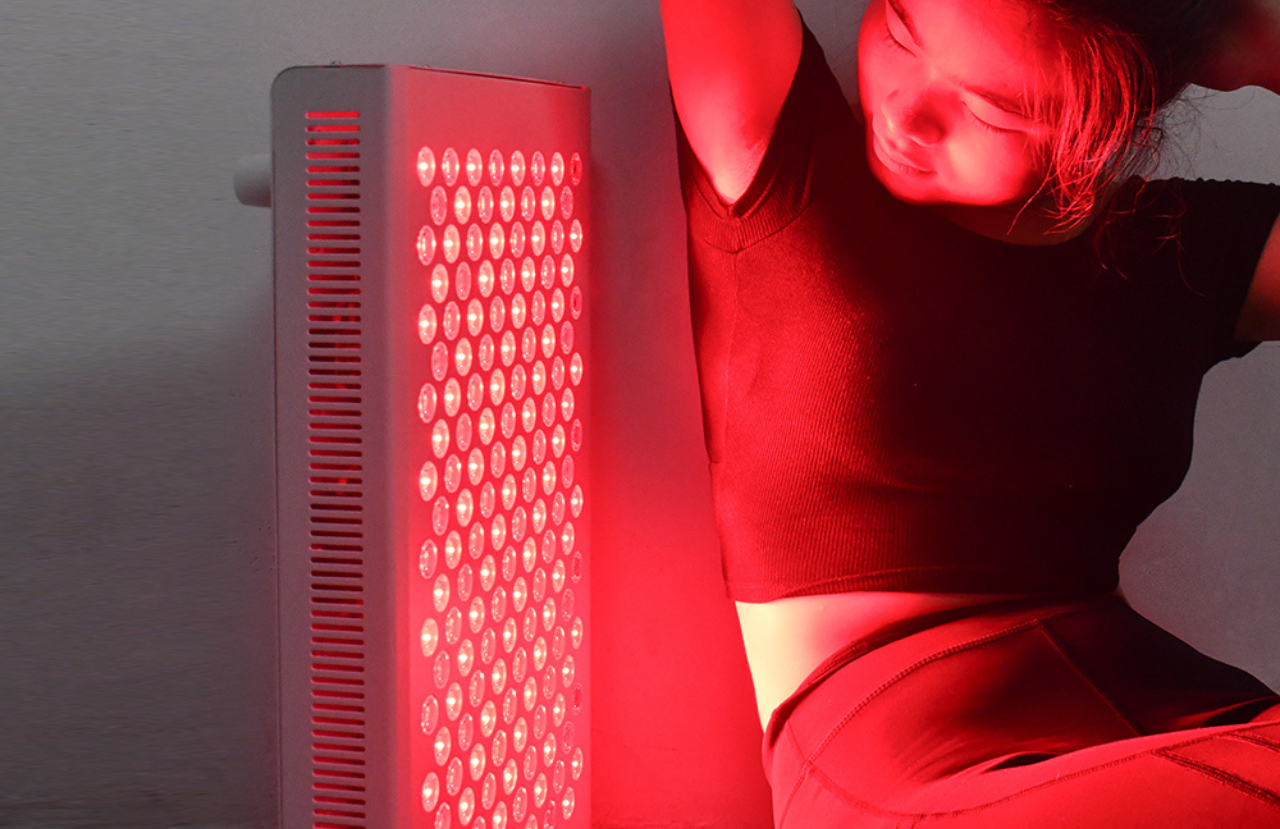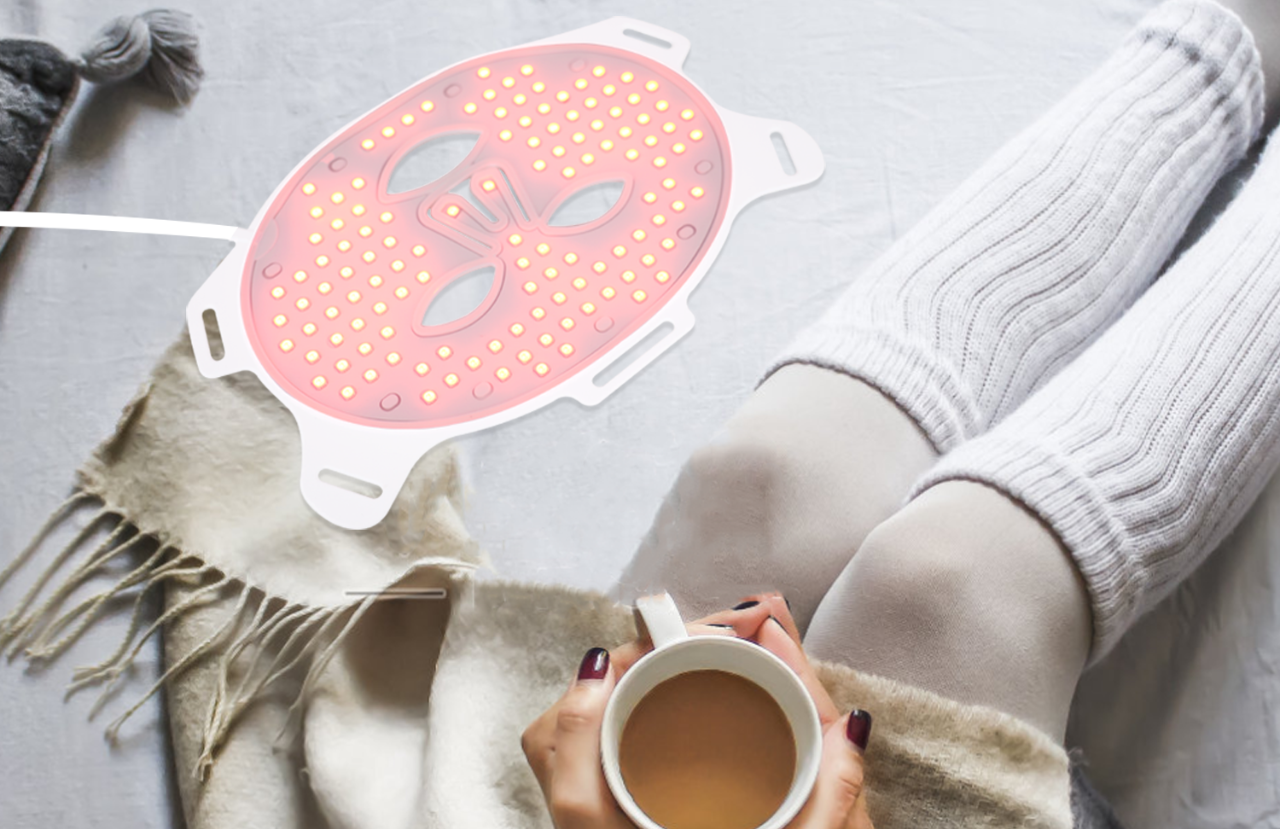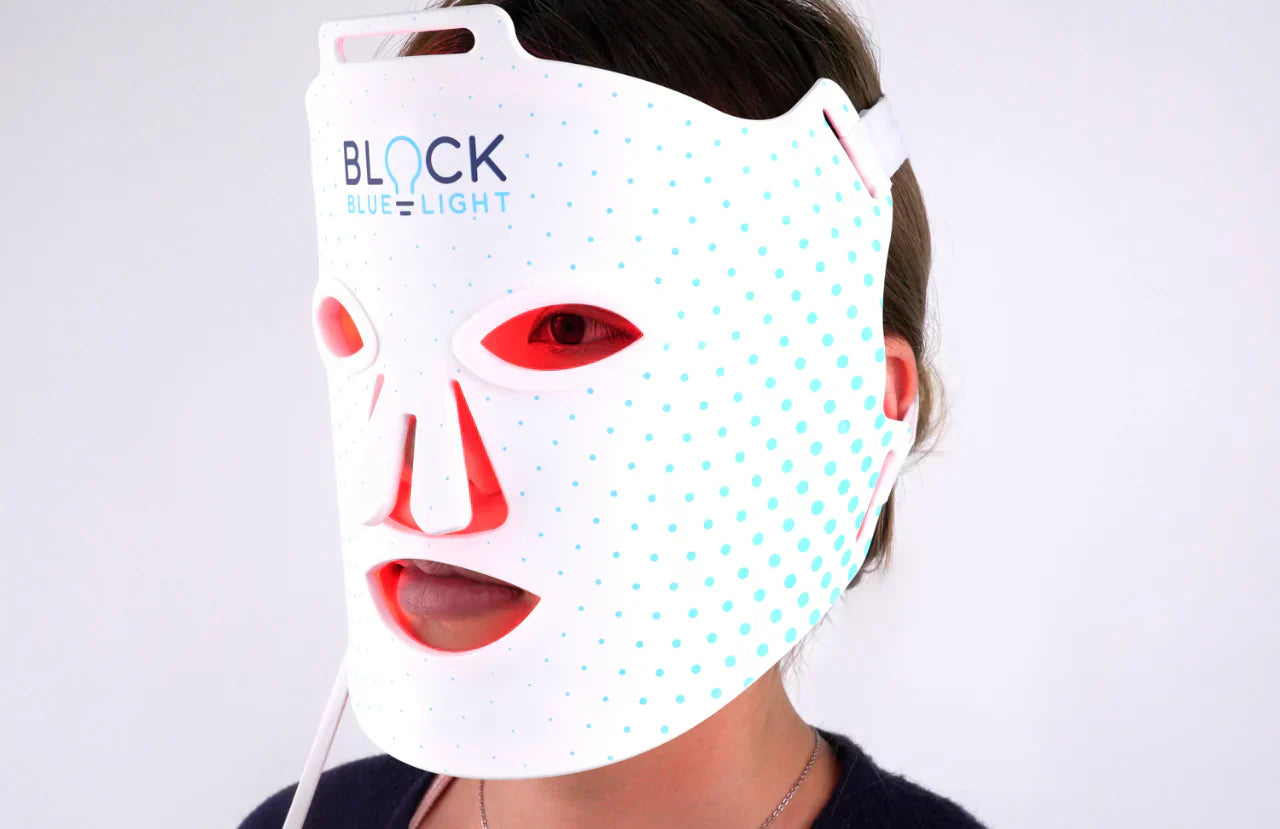We’re all aware blue light from electronics disturbs sleep patterns, but can exposure to blue light cause insomnia? Is blue light exposure responsible for more severe sleep disorders?
Though doctors have been advising for many years that we should avoid screens before bed to improve sleep quality, the question is, is there a relation between insomnia and blue light? Will blocking blue light help treat patients suffering from insomnia? What is blue light therapy for insomnia, and how does it work?
Continue reading to find out the facts and myths associated with insomnia and blue light, and see if blocking blue light and insomnia have a scientifically proven relationship.
What is insomnia?
Insomnia is a sleep disorder in which a person has trouble falling asleep at night due to hyperarousal state. If an underlying condition such as medications or health problems (e.g. heartburn) makes it difficult to fall asleep, it is classified as secondary insomnia.
If the insomnia is not related to any other condition, then it is called primary insomnia. When looking at the relationship between insomnia and blue light, we are talking about primary insomnia.
What causes insomnia?
Causes of primary insomnia are vast, but it is usually linked with;
- Stress caused by an incident or recent changes in your life.
- Surroundings such as lighting, especially blue light, have been linked with insomnia. Noise and temperature can also make it difficult to fall asleep.
- Bad sleep habits and lifestyle can also contribute to developing or worsening insomnia.
What is blue light and can blue light cause insomnia?
Blue light is one of the colours in the light spectrum that can be seen by human eyes.
Sunlight and incandescent bulbs (those old yellow bulbs) have a continuous spectrum. This means that the full spectrum of light is present- red, orange, yellow, green, blue, indigo, and violet.
Modern LEDs, fluorescent lights and screens do not produce the full spectrum - they mainly produce the colours towards the end, specifically blue light (400-500nm). These have shorter wavelengths, which means they produce higher amounts of energy.
Excessive blue light exposure has been scientifically proven to cause eye problems such as digital eye strain and retina damage. It has also been linked to health problems such as circadian rhythm mismatch, heart disease, and even obesity.
But the question is;
Can the harmful effects of blue light cause insomnia and serious sleep disorders?
First, let us look at the basics of how blue light exposure and using electronics disrupts sleep.
Our eyes are not good at blocking blue light. When they are exposed to any source of light, the light enters our eyes to the back of the retina.
In the absence of blue light (after sundown and before sunrise), the retinal cells signal the brain to produce melatonin. Melatonin is the hormone responsible for regulating the circadian cycle and promoting restful sleep. During the daytime, the blue light from the sun supresses melatonin production and produces higher levels of cortisol to make you feel more energised and awake.
At night-time, when the sun has set, our biology has been programmed to receive no blue light signals -this allows the brain to lower our cortisol levels and increase melatonin levels. Studies show wavelengths up to 550nm activate the cells in the retina called melanopsin which signal to the brain that it’s daytime. This includes range also includes green light therefore blocking blue and green light up to 550nm with blue light glasses is very important to replicate true night-time for your brain.

When blue and green light from artificial sources, such as LEDs and screens, enters our eyes, it disrupts melatonin production. This is why using screens before bed makes it difficult to fall asleep and has been linked with insomnia.
Prolonged blue and green light exposure at night disrupts our circadian rhythm. Circadian rhythm is the natural sleep and wake cycle of the body. It’s an internal 24-hour clock that makes us fall asleep at night and wake up in the morning. People who find it difficult to fall asleep early have a delayed circadian rhythm.
Now let us look at
the relation between blocking blue light and insomnia.
It’s important to differentiate between occasional sleeplessness and insomnia. Insomnia is a sleep disorder that makes it difficult to sleep at night and affects the person’s functioning during the day.
Generally, people with insomnia show symptoms such as waking up at night, fatigue, unstable moods, cognitive disruption, trouble concentrating, and behavioural/work problems.
Studies conducted on blocking blue light and insomnia:
Last year, a study was conducted by professors at Columbia University to see whether blocking blue light before bed reduced symptoms of insomnia. Patients were given either blue-light-blocking lenses or placebo lenses to wear before bedtime. Patients who wore the blue light blocking glasses reported waking up later. Mean total sleep time (TST), sleep quality, and sleep soundness were significantly higher in those patients.

In another study, researchers assigned 30 insomnia patients undergoing CBT therapy to two groups. One group was given blue light blocking glasses and the other was given clear lenses.
Patients were continually monitored using wristwatch actigraphy, sleep diaries questionnaires. The active group took less time to fall asleep and slept for longer periods.
Treating patients with ADHD-related insomnia using blue light blocking glasses has been clinically proven to be effective. After 2 weeks of use, patients’ PSQI scores dropped below the cut-off score of 5 for clinical insomnia. The glasses were worn by the subjects for 2.4 hours a day and light was reduced for only 58.7% of the evening.
In conclusion, blocking blue light in the evening has been proven beneficial for insomnia patients.
Blue light therapy for insomnia
Although much has been documented about the therapeutic uses of light over the years, health professionals have been less likely to prescribe light as a medication since it is free, present everywhere, and un-patentable.
Blue Light therapy for insomnia and other sleep disorders is based on the circadian rhythm of the body. The SCN in the hypothalamus maintains the 24-hour sleep-wake cycle of the body, but it needs an external stimulus to keep it constant. The external stimulus is from the variation in light and darkness during the day and night.
In people who have insomnia, SAD (Seasonal Affective Disorder) and other sleep disturbances have been shown to have impaired circadian rhythms. Thus, exposure to blue light in the early mornings to stimulate the SCN has been shown to be effective in treating insomnia and other sleep disturbances.
How to use blue light therapy for insomnia
The best way to use blue light therapy is to go outside just after sunrise and get as much unfiltered natural sunlight as possible. The sun is the biggest source of natural blue light, so spending time outside first thing in the morning will help anchor your circadian rhythm and signal to your brain that the day has started. This morning blue light therapy combined with blocking blue light at night will help set a healthy circadian rhythm of day and night and improve sleep.
During winter, and in locations in the world where there isn’t sufficient morning sunlight, using light therapy boxes can be used to replicate morning sunlight exposure.
Conclusion - Can blue light cause insomnia?
Since insomnia is a sleep disorder related to the circadian rhythm, which is regulated by blue light exposure patterns, the answer is yes, disturbances in exposure to blue light can cause insomnia. Behavioural patterns such as sleeping late, night-shift work, and jet lag cause misalignment of the circadian rhythm and cause insomnia. However, the causes of insomnia are vast, and specifically, secondary insomnia can be caused by many underlying health issues.
What can you do about it?
So your now aware of the relationship between blue light exposure and insomnia, here what you can do to ensure blue light doesn't have negative impacts on your circadian rhythm and overall health:
- Increase your exposure to sunlight in the early morning to get a healthy amount of natural blue light. This will anchor your circadian rhythm.

- Reduce excess blue light exposure from screens and lighting during the day by using premium blue light computer glasses. These are designed to filter the damaging blue light frequencies by 50%.
- Block exposure to blue light after sundown by using night-time blue light blocking glasses. These block 100% of blue light and green light up to 550nm.
- Use blue light free lighting throughout your house - blue light entering the eyes is only part of the problem. Our skin has similar blue light receptors to our eyes. Blue-blocking lighting ensures you have full blue light protection.
- Use a 100% blue light-blocking sleep mask - our eyelids are translucent so light pollution from street lights, neighbors and car lights exposes you to low levels of blue light while you sleep. Our Delta Sleep Mask creates a pitch-black environment to ensure no blue light is entering your eyes during your sleep. Studies show using a blackout sleep mask can increase both deep sleep and REM sleep.
References:
Brainard, G. C., Hanifin, J. P., Greeson, J. M., Byrne, B., Glickman, G., Gerner, E., & Rollag, M. D. (2001). Action Spectrum for Melatonin Regulation in Humans: Evidence for a Novel Circadian Photoreceptor. The Journal of Neuroscience, 21(16), 6405-6412.
Fargason, R., Gamble, K., Preston, T., Hammond, E., & May, M. (2013). Treatment of attention deficit hyperactivity disorder insomnia with blue wavelength light-blocking glasses. ChronoPhysiology and Therapy, 1. doi:10.2147/cpt.s37985
Harvard Health Publishing. (2020). Blue light has a dark side. Retrieved from https://www.health.harvard.edu/staying-healthy/blue-light-has-a-dark-side
How Insomnia is Different from Sleeplessness. (2020, January 23). Retrieved September 28, 2020, from https://www.sleep.org/insomnia-vs-occasional-sleeplessness/
Janků, K., Šmotek, M., Fárková, E., & Kopřivová, J. (2019). Block the light and sleep well: Evening blue light filtration as a part of cognitive behavioral therapy for insomnia. Chronobiology International, 37(2), 248-259. doi:10.1080/07420528.2019.1692859
Prevent Blindness.org. (n.d.). Blue Light and Your Eyes. Retrieved from Prevent Blindness: https://preventblindness.org/blue-light-and-your-eyes/
Roth T. (2007). Insomnia: definition, prevalence, etiology, and consequences. Journal of clinical sleep medicine : JCSM : official publication of the American Academy of Sleep Medicine, 3(5 Suppl), S7–S10.
Sloane, P. D., Figueiro, M., & Cohen, L. (2008). Light as Therapy for Sleep Disorders and Depression in Older Adults. Clinical geriatrics, 16(3), 25–31.
Shechter, A., Kim, E. W., St-Onge, M. P., & Westwood, A. J. (2018). Blocking nocturnal blue light for insomnia: A randomized controlled trial. Journal of psychiatric research, 96, 196–202. https://doi.org/10.1016/j.jpsychires.2017.10.015
